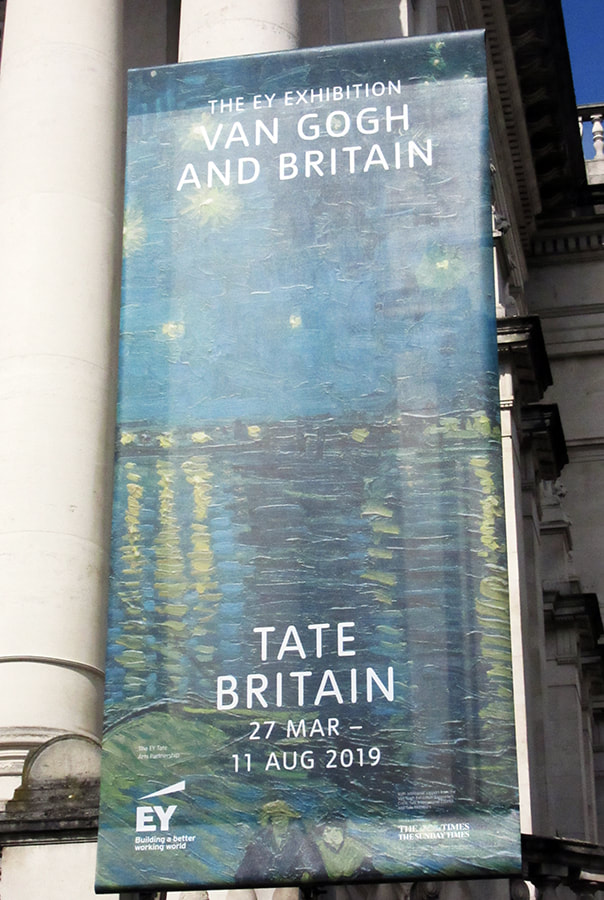"Van Gogh and Britain"“Van Gogh and Britain” at the Tate Britain looks at the influence of Britain on Vincent Van Gogh and the influence of his art on British art and culture. It includes 50 works by Van Gogh as well as works by British artists who influenced him and artists who he inspired.
As everyone knows, Van Gogh was born in the Netherlands but produced his great art while living in France. So what is the British connection? Before becoming an artist, Van Gogh explored a number of other professions. During this odyssey, Van Gogh worked in the London offices of art dealer Goupil. When he was dismissed from this position, he worked for awhile as a teacher and a preacher in the London area. In all, Van Gogh lived in England for three years from May 1873. English was one of the four languages spoken by Van Gogh. He enjoyed reading English literature, especially the works of Charles Dickens. He also liked walking around London observing life in the British capital. During his stay in England, Van Gogh visited the museums and art galleries. He liked the works of English landscape painter John Constable, the cutting-edge art of American ex-patriot James Abbott McNeill Whisttler and was impressed by the works and ideas of the Pre-Raphaelite Brotherhood. In addition, his work as an art dealer brought him into contact with English black and white prints. He went on to collect some 2,000 prints. The exhibition documents that ideas that were born in England were developed later when Van Gogh was producing art. Works by Van Gogh are juxtaposed with works by Constable, Whistler and John Everett Millais and the influence is clear. Similarly, we see that Van Gogh explored Dickensian subjects in his later art. “My whole life is aimed at making the things from everyday life that Dickens describes.” After becoming an artist, Van Gogh moved to Paris in 1885. There, Van Gogh's brother Theo, who was a successful art dealer, introduced Vincent to people in the art community. Some of the English-speaking artists were impressed with Van Gogh's work and incorporated Van Gogh's ideas into their own works. People who Van Gogh had given some of his works to such as Scottish art dealer Alexander Reid carried them back home thus planting seeds that would later take root in the English-speaking world. When Van Gogh died in 1890, he had only sold one painting. However, it was not long before his work began to be recognized. In 1910, Van Gogh's work was featured in an exhibition entitled “Manet and the Post-Impressionists” ran in London, attracting some 25,000 visitors. As a result, Van Gogh became well-known in Britain. In the decades that followed, there were more exhibitions of Van Gogh's work. At the same time, his works were purchased for the permanent collections of British museums including the National Gallery. The Tate exhibition provides examples of works by British artists who were influenced by Van Gogh's work. Some were influenced in their choice of colors, some by his brush work, some by his choice of subjects. Artists such as Frances Bacon, David Bomberg, Matthew Smith, Harold Gilman and Walter Sickert were inspired by Van Gogh. Thus, there is a clear connection between Van Gogh and Britain. It cannot be claimed that Britain was entirely responsible for Van Gogh's art. His complex genius was too multi-faceted to have a single source. However, the exhibition shows that Britain made a substantial contribution to shaping his thinking. His influence on British art is less unique. Van Gogh has influenced artists worldwide and that influence continues to grow. However, the fact that artists elsewhere have been influenced by Van Gogh does not change the fact that Van Gogh has had a substanial impact on British art. |
Above: Van Gogh's sunflowers was highly influential.
Above: Van Gogh's portrait of his friend the Scottish art dealer Alexander Reid.
|
Art review - Tate Britain - “Van Gogh and Britain”


